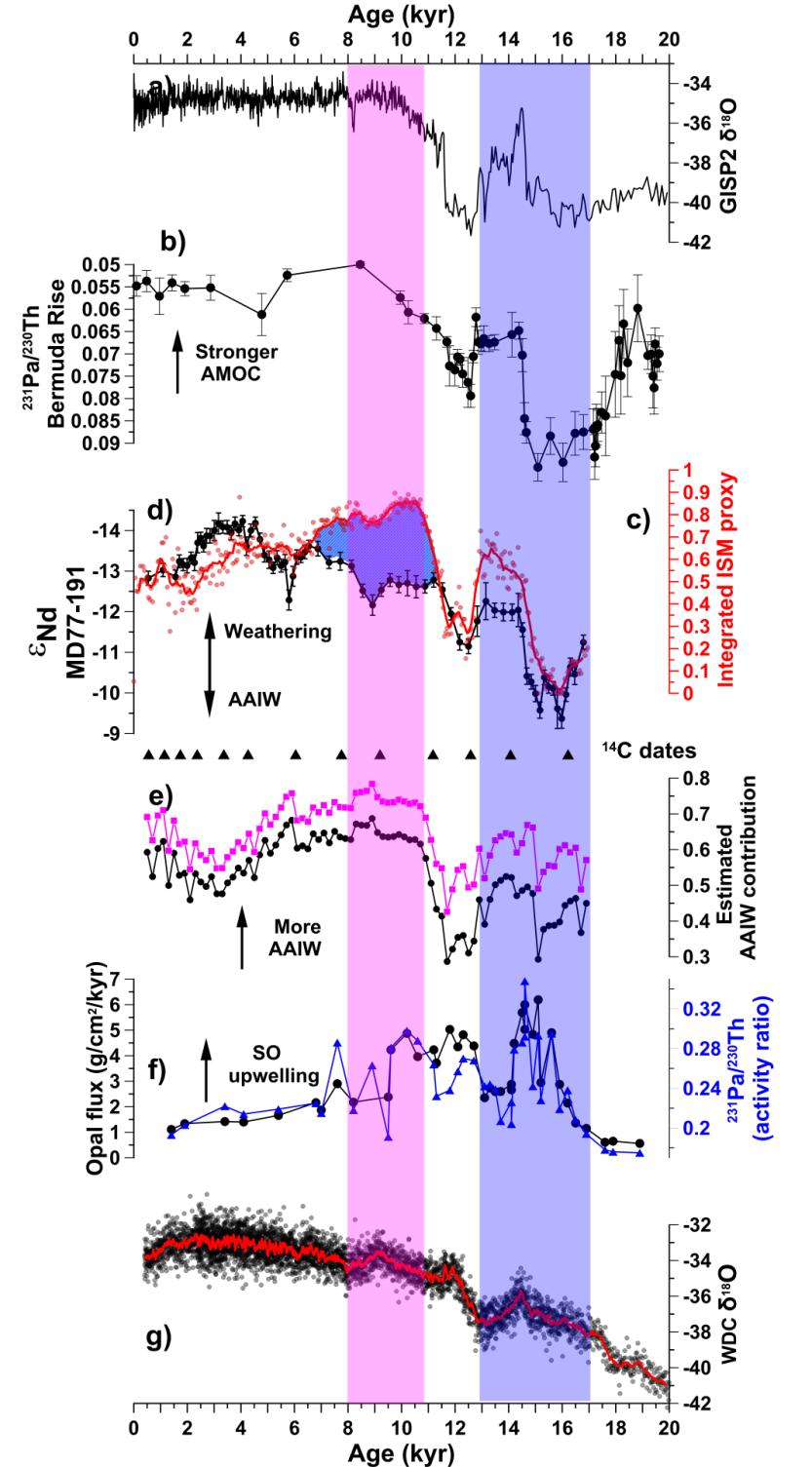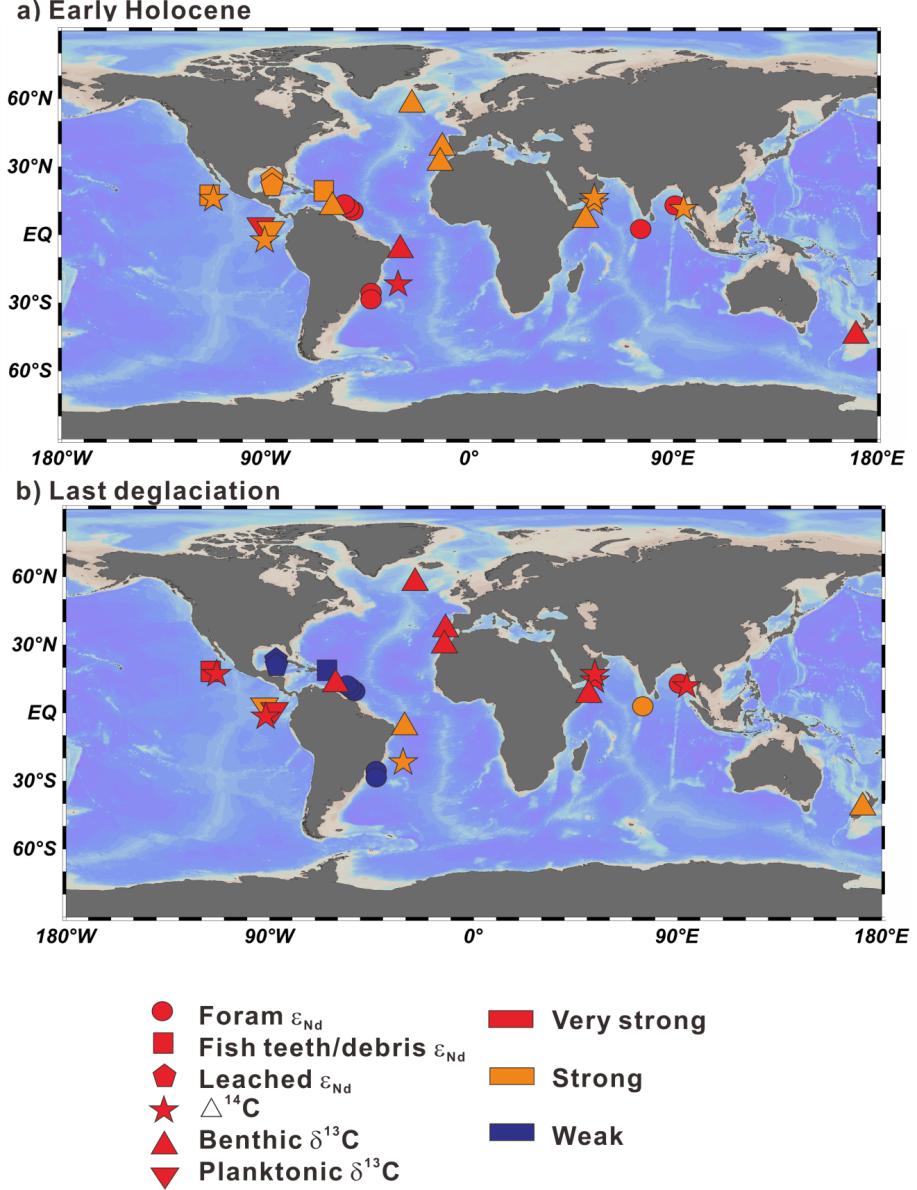The Last Deglacial (~19 ka BP ~ 11.5 ka BP) is the time period of the transition from the last major ice age to the warm period in the evolution of the Earth's climate, the study of its climate evolution mechanism can help to better understand the transition mechanism of the Earth's climate from cold to warm and provide a reference to cope with the current global warming.
However, a difficult problem in the study of climate evolution during the Last Deglacial is to decipher the interaction mechanisms between the atmospheric and oceanic climate systems.
Recently, the research team led by Prof. WAN Shiming from the Institute of Oceanology of the Chinese Academy of Sciences (IOCAS) reported a foraminiferal neodymium (Nd) isotopic record spanning the past 17,000 years with an unprecedented resolution of 200 years. This record used a mid-water marine core from the northern Indian Ocean to compare the differing interhemispheric relationships between the Indian Summer Monsoon and Antarctic Intermediate Water (AAIW).
The study was published in Geophysical Research Letters on Oct. 31.
The variability of this Nd isotopic record reflects the relative changes in continental weathering input driven by Indian summer monsoon precipitation and the strength of the Antarctic Intermediate Water mass of southern hemisphere origin. Thus by quantitative end-member decomposition of this Nd isotope record, researchers can study the interaction history of the Northern Hemisphere monsoon system (atmospheric circulation) and the Southern Hemisphere sourced AAIW (ocean circulation) on the millennial timescale.
It turns out that the weakening of the Indian summer monsoon during the millennial cold intervals coincides with the enhancement of the northward advection of AAIW, and the two vary inversely, while during the warm intervals between 10,000 and 8,000 years ago, the enhancement of monsoon activity is accompanied by a continuous strong AAIW inflow, and the two vary in the same direction. To verify the above findings, researchers further summarized the AAIW evolution records tracked globally using multiple indicators and came to a relatively consistent conclusion.
The shift from inverse to synchronous changes in the strength of the Indian summer monsoon and the AAIW may have responded to changes in the North Atlantic glacial meltwater and the southern hemisphere westerly wind belt, and played a key role in the cold-to-warm climate mode shift.
"We find different evolution relationships between Indian summer monsoon and AAIW during the Last Deglacial and the Early Holocene. This result also predicts a possible simultaneous enhancement of the Indian summer wind and the Antarctic mid-water mass in the context of global warming," said YU Zhaojie, first and corresponding author of the study.
This work was supported by the National Natural Science Foundation of China, etc.

Fig. 1 Chemical weathering and Antarctic Intermediate Water (AAIW) proxies in core MD77-191 compared to Northern and Southern Hemisphere climate records.

Fig. 2 Compilation of AAIW proxies indicating AAIW intensity/presence in the Indian, Pacific, and Atlantic Oceans during (a) the Early Holocene and (b) the last deglaciation. Different symbols indicate different proxies and/or archives, while different colours indicate the inferred intensity of AAIW advection.
Zhaojie Yu, Christophe Colin, David J. Wilson, Germain Bayon, Zehua Song, Sophie Sepulcre, Arnaud Dapoigny, Yuanlong Li, Shiming Wan. (2022). Millennial Variability in Intermediate Ocean Circulation and Indian Monsoonal Weathering Inputs During the Last Deglaciation and Holocene. Geophysical Research Letters.
(Text by YU Zhaojie)
Media Contact:
ZHANG Yiyi
Institute of Oceanology
E-mail: zhangyiyi@qdio.ac.cn
(Editor: ZHANG Yiyi)

